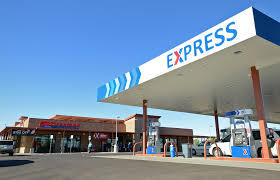
To pay for construction and repair of US bridges, roads, and interstate highways, gas taxes have often been considered an integrated ‘user fee’. Many states and the federal government had been reluctant in adding this problem at the pump by increasing gas taxes, ever since the cost of gasoline at the pump has increased since the 1970s.
Since 1993, the gas tax has not been raised by the federal government. When the cost of gasoline was rising to some of its highest levels in history, no state raised gas taxes from 2010 to 2012. However, transportation infrastructure maintenance postponement has reached a crisis point. The state taxes on fuel have now raised in many states beginning with increases in 2013.
An increase in the federal gas tax is being proposed to help pay for the major infrastructure legislation that the federal government is considering. To help fund an infrastructure bill, a willingness to consider a gas tax increase has been indicated by the White House.
How do you think your driving getaway plan will be affected by the gas taxes? In determining the price of gas at the pump in a state, gas tax rates are not the only variable. In determining the price of gas at the pump, distribution costs may play an even bigger role than state or federal gas taxes. A variety of approaches have been taken by the states to increase the gas tax. Without further legislative action, building in provisions to make adjustments in the gas tax is one of the approaches they did. Gas stations close to state lines may have significantly higher or lower prices since the price may vary widely depending on the state and which state line they are on. For locals and residents living in a state with a large population center and adjacent to a borderline to fill up their tanks, they must drive to the adjoining state.
Excise taxes imposed on wholesales passed along to consumers in the form of higher taxes, per-gallon excise taxes collected at the pump, and sales taxes that apply to the purchase of gasoline are three ways that the states implemented in gas taxes. When the American Petroleum Institute calculates the average tax rate on a gallon of gasoline in each state, the institute considers these different approaches.
With the highest tax rate of 61.2 cents per gallon, California placed as the first followed by 58.7 CPG of Pennsylvania, 54.98 CPG of Illinois, and 49,4 CPG of Washington. The states that have the lowest tax rates are Alaska with 14.66 CPG, Missouri with 17.42 CPG, and Mississippi with 18.4 CPG.
Debi G Hill, CPA